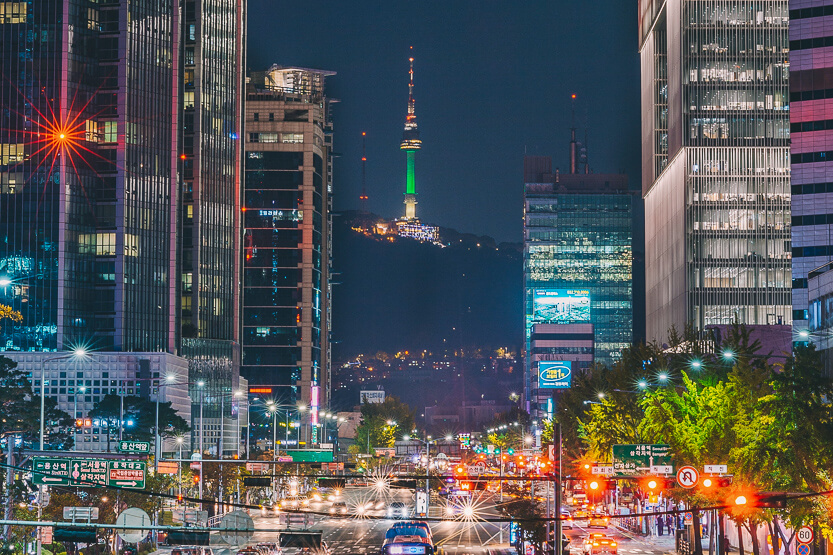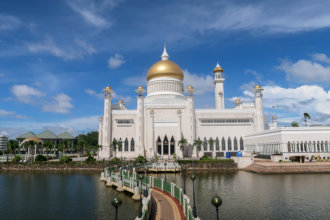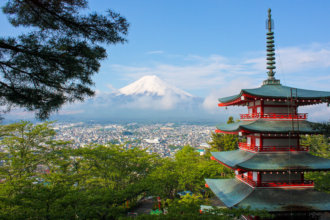Korea . . . kimchi, Kim Jong-un and K-pop. South Korea’s capital—Seoul, is a city where sleek and modern skyscrapers meet the ancient architecture of the Joseon Dynasty, dating back to 1392. Seoul ranks high on my list of favourite Asian cities for the many reasons I discuss in this post.
Food/Dining Experience
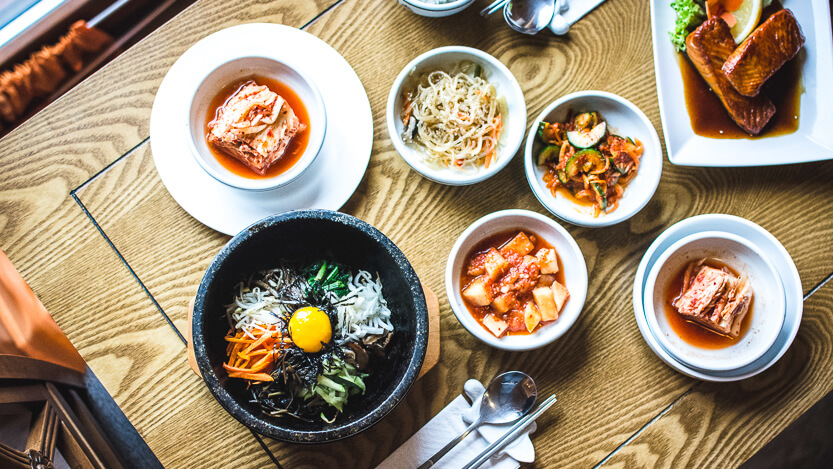
South Korea is known for their unique cuisine based around meat, rice, soup, fermentation and multiple side dishes. Whether It’s a Michelin star restaurant in Gangnam, or a more casual Korean barbecue shared with friends and drinks like soju.
Sampling the different street foods is a must, some of my favorites include: tteokbokki—spicy Korean rice cakes, red bean fish toast and spicy chicken skewers—officially the best chicken skewer of my life. I still remember with vivid detail eating that chicken skewer.
You can’t go past the traditional Korean dishes like beef bulgogi, bibimbap, kimchi or Hangover stew—perfect for recovery after trying to keep up with the Koreans during a night of drinking.
I love Koreas obsession with the combination of fried chicken and beer. Or (KFC)—Korean fried chicken, smart right? The chicken itself is not as oily as KFC and has a lighter batter. The meat is a lot juicer and fresh tasting. You don’t quite get that same feeling of guilt after smashing all that fried chicken. This type of restaurant is perfect for groups in a more casual setting.
Definitely the weirdest thing I’ve ever eaten in my life was at the Noryangjin Fish Market. If you want to get the full Korean experience, I recommend eating the sannakji or (live baby octopus). Technically the octopus is dead, but the nerves are still intact, so the tentacles are still wriggling around. Just make sure you really chomp down on it, so you don’t choke to death! I’m not joking, it has happened.
Reliable & Efficient Transport
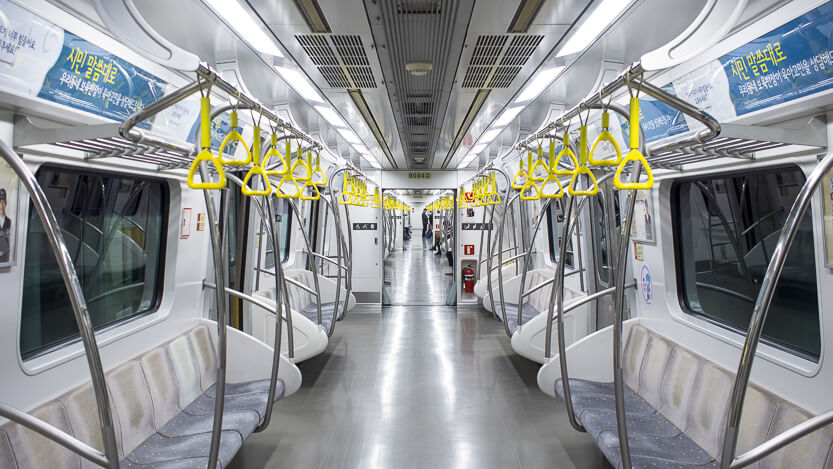
Like Japan, South Korea has a reliable, efficient, and cost-effective public transport system. I found Seoul’s subway system to be easier to use than Tokyo’s. This could be due to the size difference of Tokyo compared to Seoul, or the fact that I had previously mastered Tokyo’s subway system.
The three main ways to get around Seoul are: subway, taxi and bus. The most convenient method of transport is definitely the subway.
A single journey ticket only cost 1,250 won, or about $1 USD. This is the base fare and covers distances of 10km or less. Seoul’s subways are reliable, on time, clean and depart frequently, so it’s not a big deal if you miss the train. I found it helpful that there are English announcements, making it easier to know if you’ve got the correct train.
One thing to keep in mind, like Tokyo—the subways get extremely busy during peak times. It is advised to avoid travelling from 7:00 a.m. – 9:00 a.m. and 5:00 p.m. – 6:30 p.m.
While taxis can be handy for some trips, keep in mind the drivers usually can’t understand English well. So, be sure to have the address written in Korean or have a picture of where you want to go.
The great thing about travelling by subway in Seoul is that you are never too far from another station. So, my advice is to learn how the subway system works because it is definitely the best way to get around Seoul.
Fun fact—you can even catch the “DMZ Train” to the North Korean border.
Demilitarized Zone (DMZ)
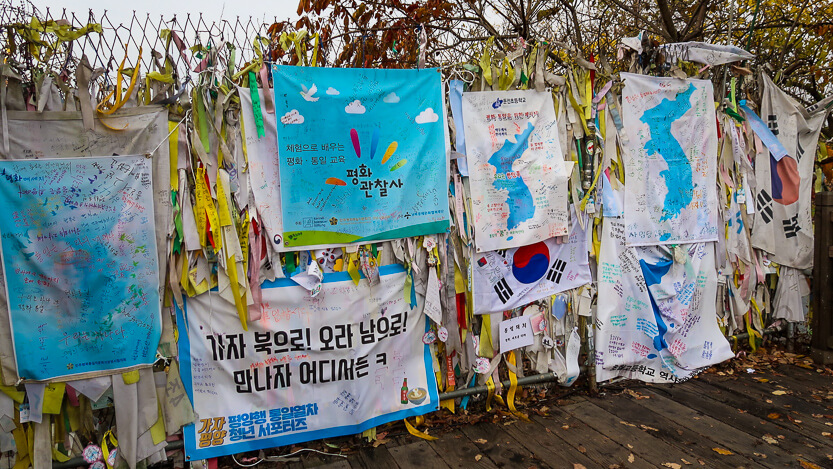
The Demilitarized Zone or DMZ for short is the 250km strip of land spanning across the Korea Peninsula, separating South Korea from North Korea. Located just 50km north of Seoul, it makes the perfect day trip. The border remains one of the most heavily guarded borders in the world since 1953 when it was put into action.
There are a bunch of different tours you can choose from. The tour I done was the DMZ tour with a North Korean defector—It included:
- North Korean defector as a guide—this gave us incredible insights into what it was like to live in North Korea, and the fascinating story of how she escaped from the North to South of the border.
- Comfortable air-conditioned bus.
- Entrance to the must-see sites such as: Dora Observatory, Unification Bridge, Third Infiltration Tunnel, Exhibition Hall, Imjingak Park, Dorasan Station and the DMZ theatre.
- Authentic North Korean lunch—mine was bibimbap with about ten side dishes of course.
We don’t know how long the DMZ will remain open for tourism. If tensions ever increase between the north and south, there is a good chance the DMZ will be closed for tourists. So, I recommend to not miss out on this opportunity to take a look into one of the most secretive countries in the world, why you still can.
History
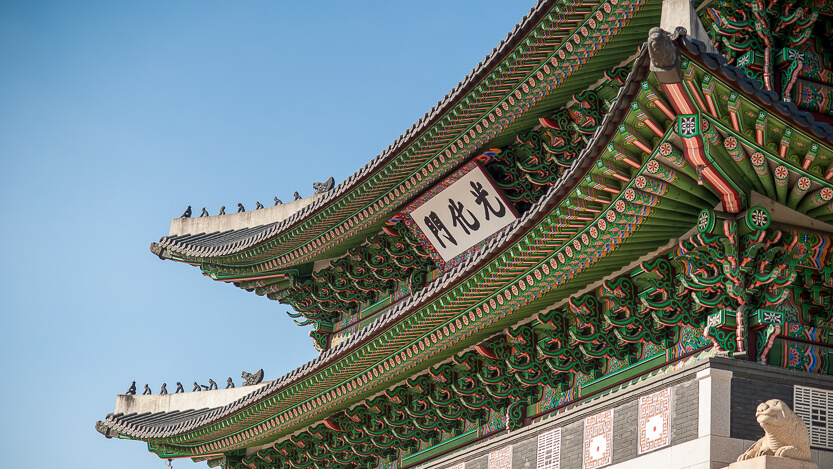
Seoul, the capital of South Korea, here history and tradition blend with technology and innovation. One of the things which amazed me about Seoul was how you have this huge, modern, fast paced city full of skyscrapers and neon lights. And amongst all that Seoul retains it’s rich history and traditions.
Undoubtedly the must-see historical sites are the Gyeongbokgung palace and the Bukchon Hanok Village.
The Gyeongbokgung palace is one of five grand palaces. It receives the most visits from tourists due to it being the largest and most important of the five palaces. The palace was built in 1395, during the Joseon Dynasty. A result of the Japanese invasion was the burning down of the palace which remained abandoned and destroyed for the following 270 years. It was later rebuilt and today is one of South Korea’s top attractions.
The Bukchon Hanok Village is a traditional Korean village located in between the Gyeongbokgung and Changdeokgung palace. The word Bukchon means “northern village” and Hanok is a Korean house. The village is one of the few places where you can take a look at the architecture used during the Joseon Dynasty.
You will also find a range of museums, cultural centers, cafes and restaurants in the area. If you really want to experience what Korean life is like, you can spend a night in a traditional hanok guesthouse.
Shopping
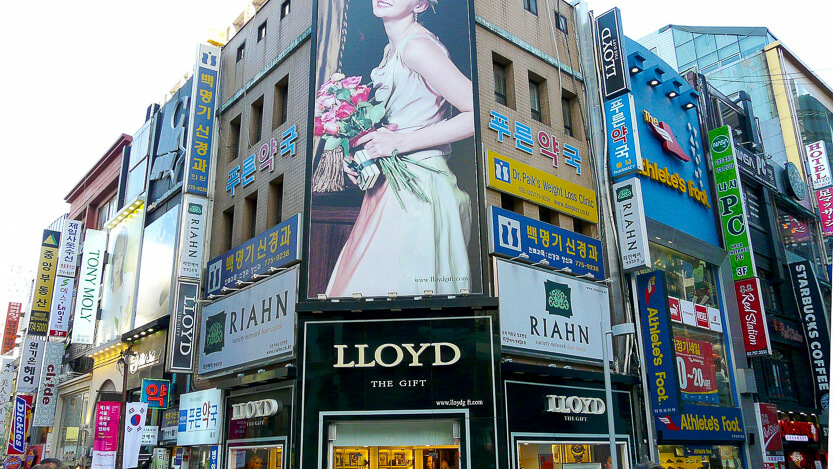
Seoul doesn’t take shopping lightly. It’s almost like a sport over here, and it can get quite overwhelming. Shopping is the sole reasons many Asian tourists travel to Seoul . . . pun intended.
There are many different shopping districts each catering to different types of shoppers. Unless you dedicate an entire trip just for shopping—you won’t get to do it all, so I’ll try and break down some of the more popular shopping areas.
Myeongdong – Probably the most popular area for shopping, not only among the younger Koreans, but also tourists. This is my favourite place to sample all the different types of street food lined up along the street. If you are into skin care, beauty products and fashion, you can’t go wrong in Myeongdong.
Insa-dong – I would recommend Insa-dong if you are after art, souvenirs, handmade goods and traditional clothing. The atmosphere here is a lot more chill and not in your face like Myeongdong. Insa-dong is also a great place to snack on tasty street food or experience a traditional tea house.
Hongdae – This area of Seoul has an energetic youthful vibe. This is due to the surrounding universities including Hongik University. It is easier to find more affordable goods which cater more towards the university students on a budget. Hongdae has you covered for fashion, beauty products and accessories—especially phone cases.
What makes the atmosphere in Hongdae so lively are the many live performances. When I was strolling the streets of Hongdae there was a K-pop performance which attracted a crowd. Also, craftsmen, artists and different exhibits take place regularly in Hongdae.
Dongdaemun Market – This is more than a market—it’s a huge shopping district notable for the 26 malls where you can buy whatever you want. From fake imitation items to luxury goods, whatever you want it’s here.
The cool thing about shopping here is that most of the stores are open till 5:00 a.m. Yep, and the atmosphere starts to pick up at around 10:00 p.m.
Common Ground – Common Ground is the largest cargo container shopping mall in the world, with over 200 containers. Common Ground offers a wide range of independent fashion stores, restaurants, cafes, food vans and live events.
There are three levels—on the first and second you will find fashion, lifestyle products, cosmetics and accessories. The clothing caters more towards the younger university crowd of Seoul. On level three there are a range of restaurants from Korean, Japanese, and Thai to Western cuisine.
Even if you don’t do any shopping, it’s worth coming just to check out, and take a picture for Instagram. You will find that this is the sole reason many younger people come to this trending shopping area.
Starfield Coex Mall – In Gangnam they do things big—just like the Starfield Coex Mall. Not only is this the biggest underground shopping mall in Asia, but it also has a frickin aquarium, movie theatre, kimchi museum and the popular Starfield Library.
The mega shopping center also has a ridiculous number of restaurants covering just about every cuisine on earth.
Even if you don’t need to do any shopping, it’s totally worth a visit just to admire the architecture or visit the other attractions like the aquarium, movie theater, library, or that thought-provoking kimchi museum.
Next Level Nightlife
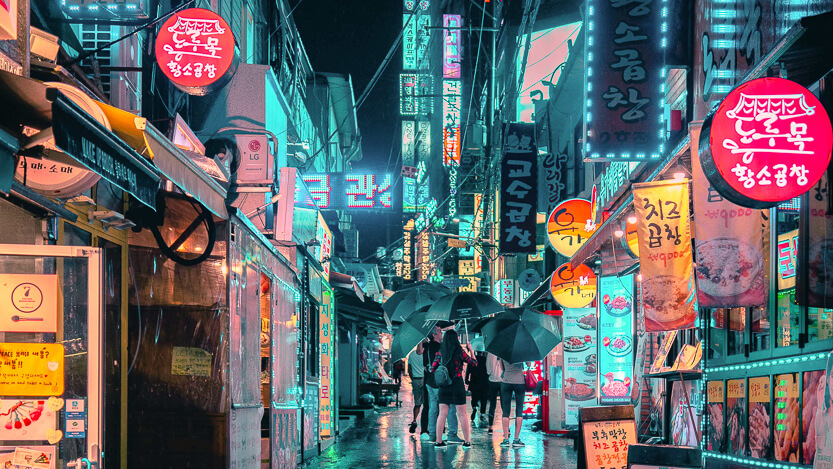
You might think Koreans just work long hours and study so much they can’t stay awake. Just soju know, in Seoul they know how to work hard and play hard . . . pun intended. Another cliché true about Seoul—this is a city that never sleeps, and I mean that. Unlike back home in Australia, the nightlife is buzzing seven days a week and continues well into the morning. Something evident in Asian countries is that the cities really come to life once the sun has set.
It doesn’t matter if your idea of a night out is:
- Clubbing at the biggest EDM clubs till the sun comes up.
- Taking a leisurely stroll along the Han River.
- Admiring the views of the city from the N Seoul Tower.
- Grilling up some pork belly at a Korean barbeque.
- Shopping at 2 a.m. in the morning just because you can.
- Going on a night hike along the Seoul Fortress Wall.
- Eating as much street food as possible.
Watching a K-pop performance in Hongdae and trying to deny that you are becoming a K-pop fan.
Safety

Although South and North Korea are technically still at war, South Korea remains one of the safest countries in the world. Despite their neighbors to north, life goes on in South Korea and tourism numbers reflect this. The South Korean tourism board have shown record numbers of visitors with no signs of slowing down.
At most you might encounter petty crime, but even this is rare. As with travelling in any country, common sense goes a long way. I personally felt completely safe walking around past midnight in the streets of Seoul.
Some considerations to keep in mind:
- Drinking culture is strong in Korea. The Koreans are some of the most well-behaved drunks in the world. Know your personal limits especially when drinking soju with the Koreans.
- Protests do happen—I happened to find myself in the middle of one when I was in Seoul. This protest had something to do with South Korea’s relationship with USA and Donald Trump. Anyway, the protest was huge, but it did remain well contained and there seemed to be no violence.
- Typhoon season takes place from June to November and weather conditions can get quite serious causing cancelations to flights.
I solely believe Seoul is worth at least a five-day visit on its own . . . pun intended. It’s one of those cities you’re never going to get bored in. This list is just scratching the surface. There a bunch of other things the city of Seoul gets right, it’s up to you to discover for yourself.


